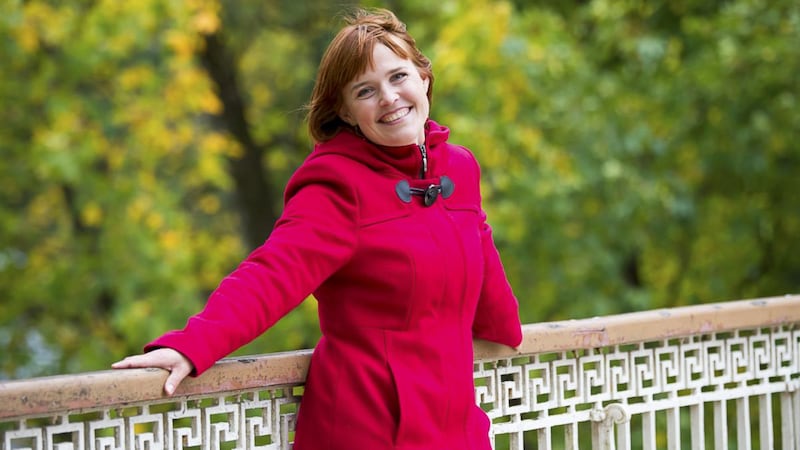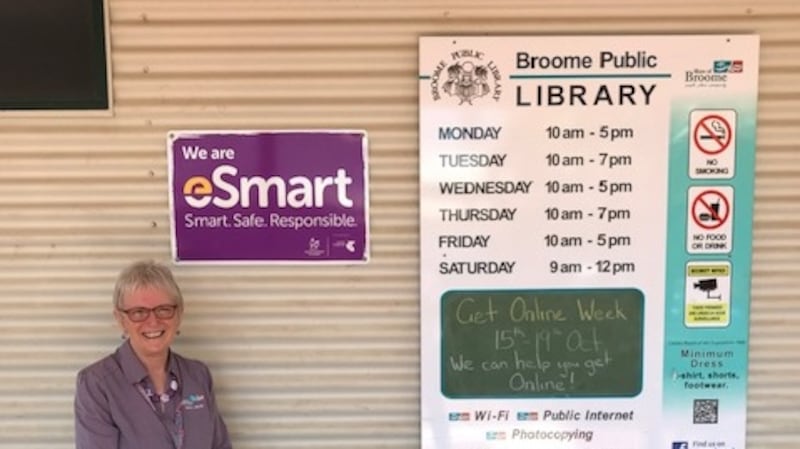“The most important asset of any library goes home at night – the library staff.” – Timothy Healy
“Librarians are among the most misunderstood professionals anywhere,” says Philip Croom, associate dean of the Rare Books and Special Collections Library of the American University in Cairo. “None of us thought we’d grow up to be one and then somehow we find ourselves working with the most extraordinary objects, collections and people.”
Many librarians might agree – the skills and qualities required for the job are vast and varied. Lots of paddling beneath the unruffled surface. Irish librarians, in my professional experience, are dedicated communicators, innovators and improvisers and, inspired by an exceptional Estonian librarian, I recently decided to check in with some of their counterparts further afield.
The Prima Vista Literary Festival, held every May in the beautiful university town of Tartu, Estonia, has established a strong link with Irish writing, largely thanks to Annika Aas at Tartu Library, which has more than 500 books by Irish writers. “My work as foreign fiction specialist brings me into contact with many interesting authors whom I invite –or try to invite – to our festival,” Aas explains.
When she ordered Audrey Magee's The Undertaking (2013), she and her colleagues loved it. "I decided that this book deserves to be translated into Estonian and the author deserves to be invited to Tartu." The festival only features books available in Estonian and Magee's novel didn't fit that brief, but this didn't stop Aas. "Getting a book published in Estonian isn't easy, but after negotiating with a dozen publishers, I managed to get a deal with Petrone Print in Tallinn." She also found a translator.
“So, thanks also to Ireland Literature Exchange and the Irish Embassy, the author read at the festival in 2016, and that lively presentation, moderated by our writer Kätlin Kaldma, was the beginning of our Irish connection. From there, it was already easier to go on.”
Next up, another personal favourite: Christine Dwyer Hickey's Tatty (2003). Turning her persuasive powers once again on Petrone, Aas secured another deal. Dwyer Hickey read in Tartu in 2017. Meanwhile, having won a residency at the Bibliothèque Publique d'Information, Aas spent six weeks visiting Parisian libraries – along with her three-month-old baby. "Libraries need to be constantly changing," she says, "and librarians need to be constantly learning."
Tartu Public Library consists of a central building, three branch libraries, a circulation unit and home visits. Its services include bringing in therapy dogs for children and a literary café for young readers. With 1,800 visitors per day (virtual visits increased by 21 per cent in 2017), the staff face challenges: the older building struggles to serve modern requirements; salaries are not attracting a new generation of librarians; and, following the economic crash, new acquisitions were curtailed. Funding is now slowly increasing but, as Aas points out, “the prices of books are increasing even faster!”.
Although my novel Overnight to Innsbruck took a different route into Estonian, its publication by Ersen (2017) was immediately followed by an invitation from Aas. She's keeping schtum about her guest for 2019, but the Irish-Estonian literary connection is in excellent hands.
The accidental librarian
At the AUC’s New Cairo Campus in Egypt, the Rare Books and Special Collections Library includes a conservation lab, digitisation centre and regional architecture collection. “The book collections total about 40,000 volumes,” explains Philip Croom, “and the archival collections fill 3,000 linear metres of cabinets.” The library offers access to exceptional collections of rare unedited primary-source information – areas of specialisation include Islamic art and architecture, Egyptology and contemporary regional history, and photography. “We take very seriously our mission to conserve and convert unique and fragile information resources, which are often at peril.”

Croom is an accidental librarian. He always loved libraries but chose it as a career only after discovering the joys of researching special collections and archives. "I became fascinated with those wonderful artefacts containing a wealth of information. Imagining their parcours through history adds to the excitement of working with the rare and precious."
His ambition has always been for this to become one of the great libraries in the Middle East. “It has the extraordinary opportunity to locate and acquire materials that add to the world’s knowledge. My time here has seen us acquire the Van-Leo Collection of photographs, the entire works of architects Hassan Fathy and Ramses Wissa Wassef, several thousand European rare books and the personal library of Boutros Boutros-Ghali. It is a great comfort to know we have saved so much that otherwise would have disappeared.”
Most readers come to access traditional sources – books and archives – but the library also offers a Digital Archival Research Repository and the RBSCL Digital Collections site that grows daily from digital conversions of archival holdings. “Although budgets have not kept pace with inflation, we can increasingly rely on donated archives.”

“I laugh when told, ‘oh, it must be wonderful to be able to read all day!’,” says Croom, who manages to read only at weekends. “We’re actually running a mid-sized corporation here, with all the issues that entails!”
Beach books
Broome Public Library is in one of the most remote regions of Australia. A three-day drive from Perth, this former pearling capital is a place of contrasts, where the red earth meets the Indian Ocean and the weather throws up cyclones in the wet season and sunny blue skies in the dry.
“The population of 14,000 doubles from May to September,” library coordinator Sally Eaton tells me, “when we experience an influx of overseas visitors and ‘grey nomads’ coming to enjoy the incredible natural attractions”. Footfall in the library also reflects the weather – the average is 250 visits per day, but with much fewer in the hot months and many more when it’s cooler. As well as the multinational and multilingual visitor base, the library caters for young families and the town’s high indigenous population. With a strong focus on encouraging literacy in young people and supporting everyone in their search for knowledge and entertainment, it’s an important meeting place.
Funding restrictions have curtailed inter-library loans, which has increased pressure to purchase more local stock with limited resources. The climate presents another challenge: high humidity for six months of the year can result in stock developing mould.
Eaton is a blow-in. “I came to Broome because I love the heat and was up for a challenge!” A librarian for 31 years, she started as a volunteer, took a post-grad course which led to children’s librarianship, “and today I’m managing a library in the remote north of WA”. Closely involved with the community-driven Corrugated Lines: A Festival of Words, she loves to innovate. “A unique outreach service we offer is beach books, whereby staff go to the magnificent Cable Beach during the busy season. We promote the library, reading and literacy and recycle donated books. It’s a popular perk with the staff!’
Broome readers enjoy Australian authors – this is Tim Winton country, after all – particularly rural romances, and Irish novels are available too. “Books still trump our online services,” says Eaton, “but the library is reviewing its operations in line with changing technology. I’m excited about where it could lead.”
Librarians might well be misunderstood, but nonetheless these guardians of literature and community are paddling away between the shelves, worldwide.
Denyse Woods’s latest novel is Of Sea and Sand











